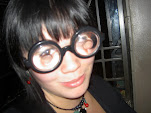My theory - heavily influenced by Chris Anderson, author of The Long Tail articles, books and blog, is that the digital age may be the death of the blockbuster book culture we've been experiencing for the past 50 years. The blockbuster complex (first coined by Thomas Whiteside in 1981), beloved of booksellers and big publishers who push those hugely popular books by the Dan Browns, Tom Clancys and Stephenie Meyers, may be flirting a war with the infinite choice provided by the Internet.
Such diveristy in choice didn't just surface with the Internet. The blockbuster complex's rise in the book market was due in part to commercial booksellers and book retailers like Borders, and Barnes and Noble. These international book superstores can easily stock 100,000 titles in store - much more than your average back-alley bookshop.
The digital age initiated the publishing industry to the e-book and online retail: 160 publishers currently have Internet publishing businesses that produce, publish, distribute and sell e-books. As of 2001, Cope and Ziguras (two RMIT professors) counted over 10,000 publications for sale by download via Internet publishers. Just imagine how many there are now. There are books for sale in store, online, e-books, Print on Demand books, e-bay books, book-swapping forums, books coming out the wahzoo. Naturally, consumers had more choice, developed a taste for their raison d'etre and now want more.
Chris Anderson's theory is that the blockbuster model which supports the ‘head’ of the market, where consumers rapidly buy millions of copies of the same book, is being balanced with the ‘Long Tail’ of consumers that purchase a large of number of ‘non-hit’ items over a longer period of time. Online retail giants like Amazon - unrestricted by the physical space of a bookstore - can market billions of different titles at once. Amazon has a total inventory of 3.7 million book titles and compared to a typical Borders or Barnes and Noble of 100,000 titles, makes it easy to find those books that can't be found anywhere else. Here is a dinosaur chart from Edgwater Technology Weblog to demonstrate the Long Tail:
 The niche-spawning effects of digital technology is just a new development of what book publishing used to be before the blockbuster complex; companies relying on steady long-term sales of mid-list titles with the opportunity to explore publishing new authors who in turn also became mid-listers. The wheel of history is repeating, just in a new way. Maybe the ‘death of the book’ (the death of books as physical objects) as online retailers and e-books become more popular, will be a re-birth of largely ignored book genres. As consumers explore further down the Long Tail, perhaps we will see an upsurge in sales of "quality" literature (and by "quality", I mean anything that is well-written and edited).
The niche-spawning effects of digital technology is just a new development of what book publishing used to be before the blockbuster complex; companies relying on steady long-term sales of mid-list titles with the opportunity to explore publishing new authors who in turn also became mid-listers. The wheel of history is repeating, just in a new way. Maybe the ‘death of the book’ (the death of books as physical objects) as online retailers and e-books become more popular, will be a re-birth of largely ignored book genres. As consumers explore further down the Long Tail, perhaps we will see an upsurge in sales of "quality" literature (and by "quality", I mean anything that is well-written and edited).Amazon founder Jeff Bezos once said his goal was: "to make every book available – the good, the bad, and the ugly." The Web has enabled us to see the light at the end of the blockbuster tunnel - the good among the bad and the ugly. I love ye olde bookstore, but for science fiction and fantasy readers like me, the online book market has opened up new vistas. I am going see if I can order Patrick Rothfuss' new novel - which comes out in Australian bookstores in December - off Amazon. Don't damn me for not supporting Australian publishers. I need it. I'm a niche market.
If you're interested in the Long Tail theory you can read Chris Anderson's Blog on Wired.

Oh yeah! I was reading about this just the other day – there was some amazing statistic about the way that Amazon's sales figures for unpopular and rare titles have turned out to be not nearly as bad as everyone expected that they should be (based on sales figures from physical bookstores) ... The sales of the rare titles are really low per title, but because Amazon has so many of these titles (millions more than any physical bookstore has ever had, ever!), Amazon have actually ended up making more money from their long tail than they do from their bestsellers!
ReplyDeleteI wish I could remember where I'd read that, now ... I think I need a better way of keeping track of my reading history ...
I love it - the book world has gone backwards.
ReplyDeleteI love that you use the image of a dinosaur (long extinct) to represent the publishing industry. Is that meant to be a metaphor for the decline of the local bookstore? So will it go out in a Big Bang, or freeze over slowly?
ReplyDeleteHey Ciara5,
ReplyDeleteThe blockbuster complex has dominated trade publishing for a long time now - 60 years of mostly mindless bestsellers like Twilight and The Da Vinci Code. I think it will take a long time for the Long Tail to grow fatter as people explore the new choices available. The digital, virtual book market expands every millisecond. We need time to catch up!